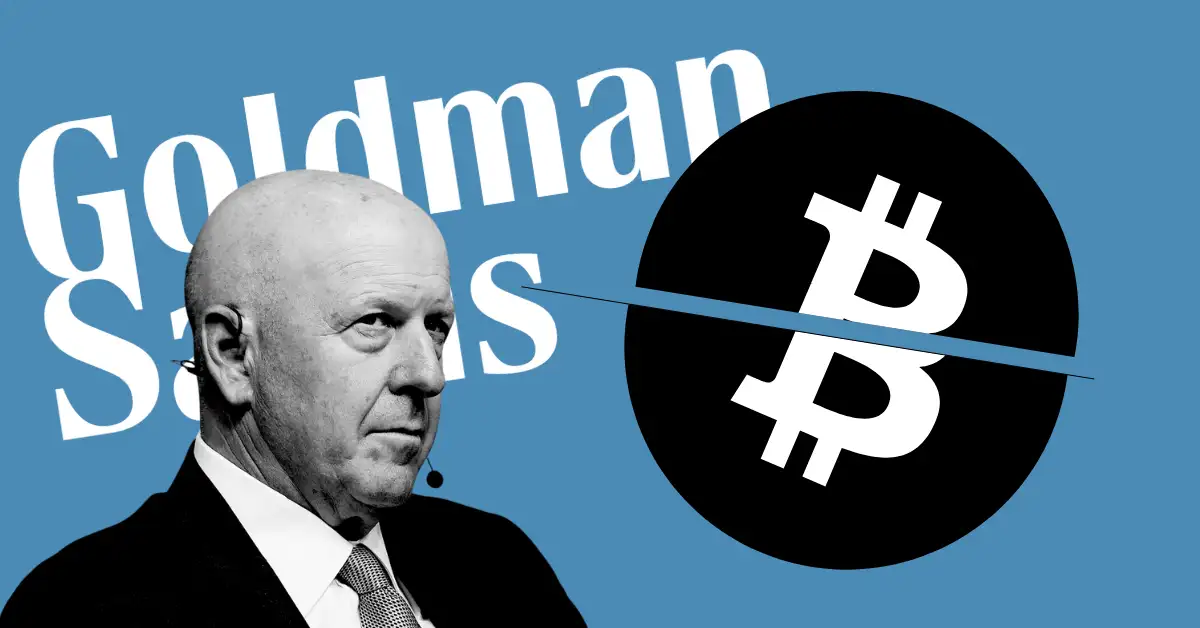Why Past Bitcoin Halvings May Not Predict Future Prices: Goldman’s Warns

Goldman Sachs warns against simplistic interpretations of past Bitcoin halving events.
Despite macroeconomic shifts, Bitcoin's price has surged impressively ahead of the halving.
Analysts remain divided on post-halving outlook, emphasizing medium-term dependency on BTC ETF adoption.
In just two days, the cryptocurrency world braces for a pivotal event: the Bitcoin halving. This anticipated occurrence is poised to slice the reward for mining Bitcoin in half, from 6.25 BTC to 3.125 BTC per block, marking a significant milestone in Bitcoin’s evolution.
Past halving events have often sparked prolonged price rallies, but a nuanced perspective emerges from investment titan Goldman Sachs, urging caution against simplistic interpretations.
Goldman Sachs’ Fixed Income, Currencies and Commodities (FICC) and Equities team underscored the historical trend of BTC price appreciation post-halving but stressed the need to consider prevailing macroeconomic conditions. Previous halvings occurred against a backdrop of rapid growth in the M2 money supply of major central banks and near-zero interest rates, fostering risk-taking behavior across financial markets, including cryptocurrencies.
Macroeconomic Shift: Then vs. Now
Previous halvings occurred against a backdrop of rapid growth in the M2 money supply of major central banks and near-zero interest rates, fostering risk-taking behavior across financial markets, including cryptocurrencies.
However, today’s macroeconomic landscape presents a stark contrast, with high inflation and interest rates prevailing. Major central banks, including the U.S. Federal Reserve, European Central Bank, Bank of Japan, and People’s Bank of China, have witnessed significant increases in their M2 money supplies. This divergence raises questions about the potential impact of the halving on Bitcoin’s price trajectory.
Despite these macroeconomic shifts, the Bitcoin price has surged impressively this year, reaching record highs well ahead of the halving. Inflows into U.S.-based spot exchange-traded funds (ETFs) have played a pivotal role in this surge, with significant assets under management amassed within a short span.
Read Also : Crypto Price Prediction Post Bitcoin Halving: Should You Buy, Hold or Sell?
Post-Halving Outlook
Analysts remain divided on the post-halving outlook, with some suggesting that a considerable portion of the anticipated surge has already been priced in. Others anticipate a “sell-the-fact” pullback following the event. Goldman Sachs views the halving as a psychological reminder of Bitcoin’s capped supply but emphasizes the medium-term outlook’s dependence on the adoption of BTC ETFs.
As the countdown to the halving continues, the convergence of market dynamics and macroeconomic conditions sets the stage for a potentially transformative moment in Bitcoin’s journey.
Read More : Bitcoin Halving 2024: How Will It Impact Your Bitcoin ETFs?













